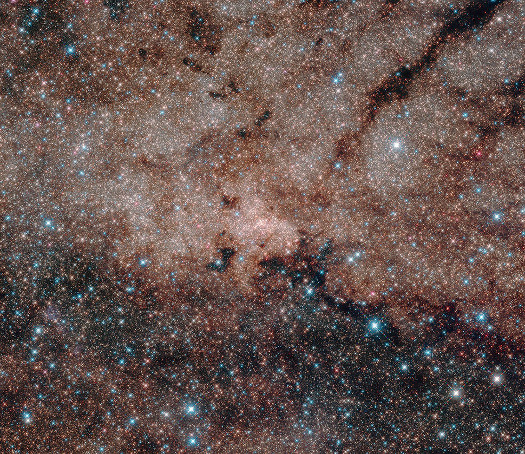 |
| June 21, 2016 | Volume 12 Issue 23 |
Designfax weekly eMagazine
Archives
Partners
Manufacturing Center
Product Spotlight
Modern Applications News
Metalworking Ideas For
Today's Job Shops
Tooling and Production
Strategies for large
metalworking plants
Location, location, location: Possibility of alien contact could be 1,500 years away
By Daryl Lovell, Cornell University
If you're expecting to hear from aliens from across the universe, it could be a while.
Deconstructing the Fermi Paradox and pairing it with the Mediocrity Principle into a fresh equation, Cornell astronomers say extraterrestrials likely won't phone home -- or Earth -- for 1,500 years.
"We haven't heard from aliens yet, as space is a big place -- but that doesn't mean no one is out there," said Cornell student Evan Solomonides '19, presented "A Probabilistic Analysis of the Fermi Paradox" at the American Astronomical Society's meeting June 16 in San Diego. Yervant Terzian, Cornell's Tisch Distinguished University Professor of Astronomy, is the co-author of the paper upon which this presentation is based.

Peering deep into the heart of our Milky Way galaxy using infrared vision, NASA's Hubble Space Telescope reveals a tapestry of more than half a million stars. Except for a few blue foreground stars, the stars are part of the Milky Way's nuclear star cluster, the most massive and densest star cluster in our galaxy. This star cluster surrounds the Milky Way's central supermassive black hole, which is about 4 million times the mass of our sun. [Image Credit: NASA, ESA, and Hubble Heritage Team (STScI/AURA, Acknowledgment: T. Do, A.Ghez (UCLA), V. Bajaj (STScI)]
"It's possible to hear any time at all, but it becomes likely we will have heard around 1,500 years from now," said Solomonides. "Until then, it is possible that we appear to be alone -- even if we are not. But if we stop listening or looking, we may miss the signals. So we should keep looking."
The Fermi Paradox says billions of Earth-like planets exist in our galaxy, yet no aliens have contacted or visited us. Thus the paradox: the cosmos teems with possibility. The mediocrity principle -- originated by 16th-century mathematician Copernicus -- says Earth's physical attributes are not unique, as natural processes are likely common throughout the cosmos, and therefore aliens won't discover us for a while.
Hunting for extraterrestrials means sending out signals like television broadcasts, for example. As Earth's electronic ambassador, TV and radio signals are sent into space as a byproduct of broadcasting. These signals have been traveling from Earth for 80 years at the speed of light. For aliens receiving these transmissions, they would likely be indecipherable, said Solomonides, as the extraterrestrials would need to decode light waves into sounds, then parse 3,000 human languages to grasp the message.
Nonetheless, Earth's broadcast signals have reached every star within about 80 light years from the sun -- about 8,531 stars and 3,555 Earthlike planets. [All in all, that is a mere whisper sent to a tiny fraction of the 200 billion stars our Milky Way galaxy contains.]
"Even our mundane, typical spiral galaxy -- not exceptionally large compared to other galaxies -- is vast beyond imagination," said Solomonides. "Those numbers are what make the Fermi Paradox so counterintuitive. We have reached so many stars and planets, surely we should have reached somebody by now, and in turn been reached ... this demonstrates why we appear to be alone."
Combining the equations for the Fermi Paradox and the mediocrity principle, the authors suggest Earth might hear from an alien civilization when approximately half of the Milky Way Galaxy has been signaled in about 1,500 years. "This is not to say that we must be reached by then or else we are, in fact, alone. We simply claim that it is somewhat unlikely that we will hear anything before that time," Solomonides said.
For Solomonides, this research was inspired by an assignment in the astronomy course called "The Search for Life in the Universe" taught by Terzian. As an aficionado of the late Cornell astronomy professor Carl Sagan, who contemplated this very problem, Solomonides explained in a Sagan-esque way:
"We are on the third planet around a tediously boring star surrounded by other completely normal stars about two-thirds of the way along one of several arms of a remarkably average spiral galaxy. The mediocrity principle is the idea that because we are not in any special location in the universe, we should not be anything special in the universe."
Published June 2016
Rate this article
View our terms of use and privacy policy
